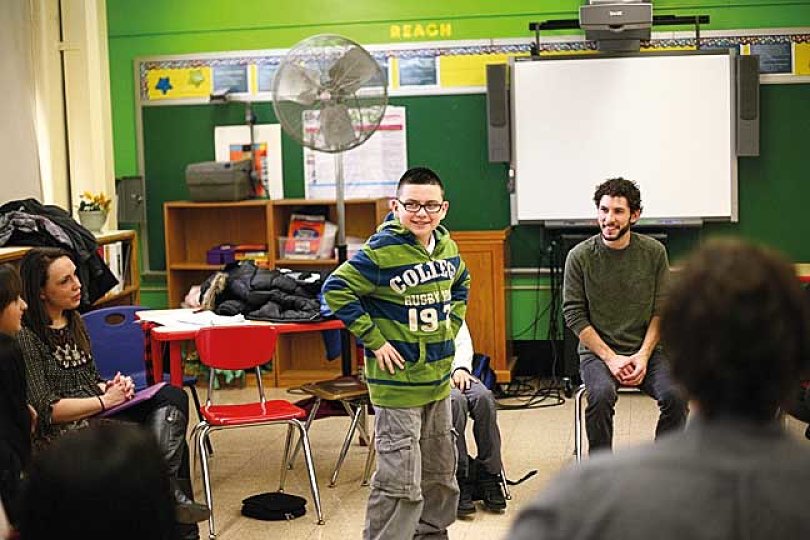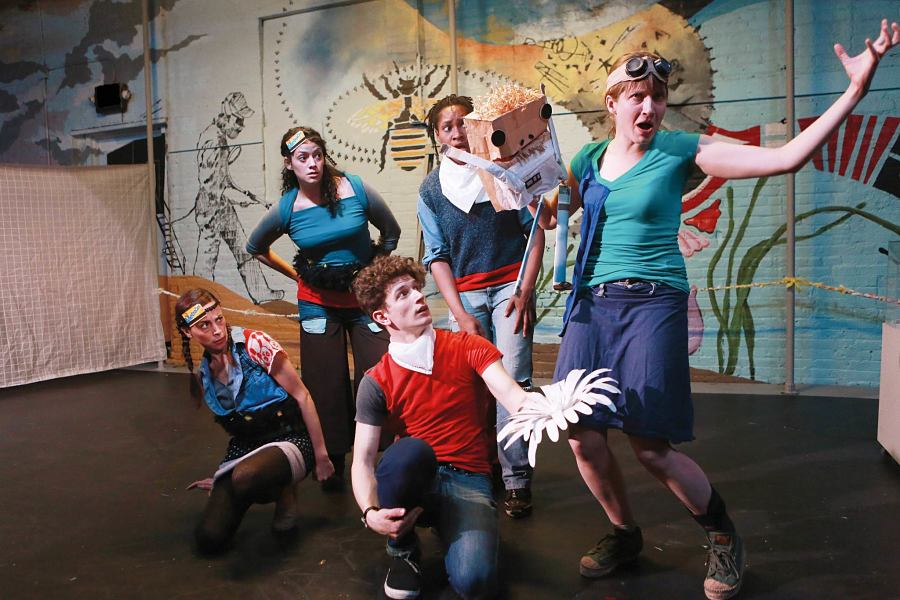“What can I do?” No doubt that was a big question on the minds of world leaders as they met in Peru in December 2014 for the Lima Climate Change Conference. As scores of politicians discussed ways to reduce greenhouse gas emissions, many of us ordinary citizens were asking ourselves the same question. Whether or not our leaders come to an agreement, what can we do on a local scale to address this and other pressing environmental issues?
The query is particularly relevant in the theatre. In our field, productions are often energy-intensive. What we choose to present onstage can have a direct impact on communities. In the past few years, organizations like the Broadway Green Alliance and the San Diego–based Mo`olelo Performing Arts Company (which created an implement called the Green Theater Choices Toolkit) have developed strategies to reduce theatre productions’ impact on the environment. Simultaneously, there has been an effort on the part of producing organizations to present plays that reflect the new environmental reality and embrace more sustainable values. But educating adults will get us only so far; it is the generations that follow us who will bear the brunt of our environmental crisis.
The Bushwick Starr in Brooklyn, N.Y., has taken that idea to heart. Five years ago, in collaboration with Jeremy Pickard of the eco-theatre collective Superhero Clubhouse, the Starr created the Big Green Theater afterschool program. Combining playwriting, environmental education and an annual green-theatre festival, BGT encourages creative thinking around environmental issues and models green-theatre practices. Over the course of four months, a dozen fifth-graders interact with guest scientists and eco-experts to explore environmental topics, then write plays in response to what they have learned. The plays are subsequently rehearsed and performed at the Starr by an ensemble of professional actors from Superhero Clubhouse, in productions using only green-theatre practices.
The two organizations bring distinct strengths to the program. Nestled in Bushwick—a rapidly gentrifying working- and middle-class neighborhood in the northern part of Brooklyn—the Starr is community-focused. So when founder/artistic director Noel Joseph Allain and executive director Sue Kessler started thinking about a new educational program, they reached out to their Bushwick neighbors to ask what was needed. The overwhelming response was afterschool arts programming.
That prompted Allain and Kessler to combine their interest in the environment with the community’s need for arts education, and BGT was born. This year, thanks to support from local councilman Antonio Reynoso and the Reva and David Logan Foundation, the program is being offered at two schools, P.S. 123 and P.S. 75, and will culminate April 24–26, just after Earth Week, with free-of-charge performances at the Starr’s fourth annual Big Green Theater Festival.
Superhero Clubhouse works at the intersection of science and theatre—its deep concern for the environment influences every aspect of the content, process and production of its plays. Under the guidance of Pickard, the company devises pieces that fall under one of two initiatives: the Planet Plays and Climate Collaborations. The Planet Plays are nine multidisciplinary shows inspired by particular questions of ecology. Climate Collaborations are annual family-friendly productions made in collaboration with climate scientists.
The company also runs a Sci-Art Lab, a bimonthly workshop intended to develop a working model of collaboration between environmental scientists, policy experts and theatre artists. Given its broad experience with environmental theatre, Superhero Clubhouse was an obvious choice to partner with the Starr and develop the curriculum for BGT.

Climate change is the main topic of this year’s BGT: During the first scientific presentation, in January at Columbia University’s Lamont-Doherty Earth Observatory, students toured the labs of a paleobotanist and cored a tree with a dendrochronologist. In the following weeks, they participated in interactive presentations led by a water engineer, an agricultural scientist, a NASA climate modeler and an energy scientist. After each presentation, students were guided through playwriting exercises that helped them think creatively about expressing scientific information through story. At the end of February, they collectively chose the plays they were most interested in developing further. March was dedicated to refining the selected plays, and learning about songwriting and design, in preparation for the April productions.
On the day I visited the class at P.S. 75, Pickard led the students through a warm-up exercise in which each student was secretly assigned an animal and each adult volunteer, a biome (or climatic environment). The students then went around the room, asking the adults questions about food, temperature and environment in order to figure out where their habitat was. This was followed by a writing exercise in which they created a loose outline designed to help them come up with the setting and characters for a play.
Though some students wrote alone, most worked in pairs or trios, learning the art of collaborating. Several students demonstrated their adeptness at drawing the basic elements of the climate system—sun, Earth, atmosphere, energy, greenhouse gases—as well as showing how they relate to each other.
In addition to running the program, Pickard directs the final performances, which are fully realized with set, costumes, sound and light. The plays are little gems of creativity: From talking worms, to singing cormorants, to hurricanes personified as characters, they burst with imagination and show a deep concern for the world and the creatures that inhabit it. Some of the plays contain songs. One of my favorites, a heart-wrenching ballad from the play The Quest to Find Out by Leslie Rivera and Ximena Ramos, is sung by a bee who has lost her family to pesticides:
Oh, we used to be happy
We’d go to the park and make the dogs bark
We’d waggle for hours as we pollinated flowers
Oh, it’s a black day
All is lost, our parents have gone
To the big beehive in the sky
Why do we have to die?
Why do we have to die?
Oh why do we, why do we have to die?
In addition to being green in content, BGT is green in practice. The plays are produced using sustainable and/or recycled materials; energy-efficient lights; nontoxic paints, dyes and makeup; electronic ticketing and programming (instead of paper tickets and programs), and so on. This not only reduces the energy footprint and keeps waste and hazardous products out of landfills—it also leads to wonderfully theatrical staging and design where, for example, a 10-foot-tall tree magically materializes out of discarded clothing; recycled pillow cases become a giant projection curtain; and garbage bags provide the raw material for a mermaid’s hair and tail.
What is the program’s biggest takeaway? Allain and Pickard both agree that BGT is first and foremost a confidence-building experience. Seeing the result of their hard work presented publicly, at a professional venue, in front of their family and friends, gives them a great sense of accomplishment.
“What can I do?” It is true that governments and corporations need to get on board in order for climate change to be addressed long-term. But leaders and creative thinkers are needed at every level of society. Students who participate in the BGT program may not become politicians or environmental attorneys. But the fact remains that for every policy passed by Congress, hundreds of individuals start recycling programs, community solar projects and urban farms, organize against fracking, block pipelines, or teach kids how to be good stewards of the Earth.
Chantal Bilodeau is a New York–based playwright. She is artistic director of the Arctic Cycle and the founder of the blog Artists and Climate Change.


